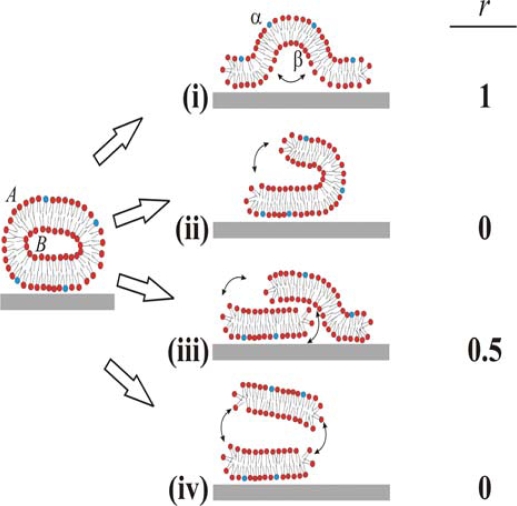Figure 1.
Four possible scenarios for vesicle rupture, unfolding and supported lipid bilayer formation are represented schematically in a simplified 2D side view: (i) rupture forces the membrane outwards, exposing the outer monolayer A of the liposome to the bulk, corresponding to monolayer α in the SLB; (ii) rupture opens the membrane on one side and unfolding results in exposure of the liposome monolayer B to the bulk; (iii) rupture divides the membrane into two fragments which adsorb next to each other, resulting in a ~50:50 ratio of the lipids in A between the α and β monolayer lipids; (iv) displays the same mechanism as in (iii) but the upper membrane fragment desorbs, resulting in an effective complete orientation of the inner leaflet, B, of the vesicle towards the bulk, α, in the SLB. The right column displays the idealized fraction, r, of outer-monolayer lipids, A, in the vesicle membrane ending up in the bulk-exposed upper leaflet, α, in the adsorbed SLB after completed formation.

